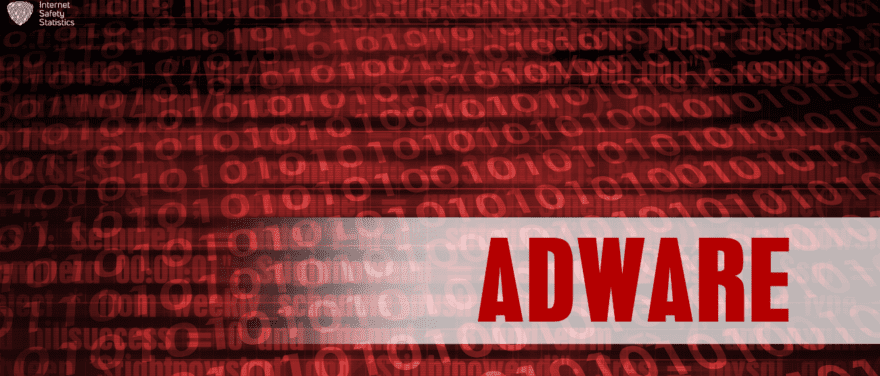
Malware and Adware are two terms that are often used interchangeably, but they represent different types of malicious software that can have varying impacts on your devices. Understanding the difference between them is crucial for taking appropriate preventive measures and effectively dealing with their consequences.
What is Malware?

Malware refers to a range of malicious software intended to damage systems, steal data, distribute spam, or interrupt operations within computer systems. While there are many different types of malware, Their primary objective is to undermine the security of a computer system or network, a goal they all have in common.
Types of Malware
There are many different types of malware, but they all share the common goal of compromising the security of a computer system or network. Below are several prevalent forms of malware:
Viruses: Viruses are self-replicating programs that spread by attaching themselves to other files or programs. Once they infect a system, they can replicate and spread to other devices on the network.
Worms: Worms do not require a host file to spread; instead, they can spread by exploiting vulnerabilities in computer systems or networks. They can replicate quickly and spread widely, causing significant damage.
Trojans: Trojans are malicious programs that masquerade as legitimate software. Once downloaded, they can perform malicious actions, such as stealing data, installing other malware, or disrupting system operations.
Ransomware: Ransomware encrypts files on a victim’s computer and demands a ransom payment in exchange for decryption. If the ransom is not paid, the victim’s files may be permanently lost.
Spyware: Spyware gathers information about a user’s online activities and sends it to third parties. This information can be used for marketing purposes, profiling, or even blackmail.
Adware: Adware generates revenue for advertisers by displaying ads on a user’s computer. Some adware can also be intrusive, displaying pop-up ads and tracking user activity.
Rootkits: Rootkits are stealthy programs that allow attackers to gain unauthorised access to a system and maintain that access undetected. They can hide system files and processes, making it difficult to detect and remove them.
Other types of malware include:
- Keyloggers: Keyloggers record a user’s keystrokes, allowing attackers to steal passwords and other sensitive information.
- Backdoors: Backdoors are created by attackers to gain unauthorised access to a system. Once they have a backdoor, attackers can easily return to the system without having to exploit a vulnerability.
- Botnets: are interconnected groups of compromised computers, manipulated by attackers. They’re utilised to execute spam distribution, conduct denial-of-service attacks, or propagate malware.
- Zero-day malware: Zero-day malware is malware that exploits vulnerabilities that are not yet known to the public. This makes it very difficult to protect against, as there are no patches available to fix the vulnerabilities.
Purpose of Malware
The purpose of malware is to harm computer systems, steal data, spread spam, or disrupt operations. Malware can be used for a variety of malicious purposes, including:
Financial gain
Malware can be used to steal money or other valuable information from victims. Malware is designed to pilfer money or valuable data from its victims. For example, Ransomware encrypts files stored on a user’s device and demands a ransom for the decryption key needed to restore access.
Espionage
Malware can be used to gather information about a user’s activities, such as their browsing history, emails, and passwords. This information can be used for blackmail, identity theft, or other nefarious purposes.
Destruction
Malware can be used to damage or destroy computer systems. For example, worms can replicate quickly and consume all available resources on a victim’s computer, rendering it unusable.
Disruption
Malware can be used to disrupt the operations of businesses or organisations. For example, denial-of-service attacks can flood a victim’s website with traffic, making it inaccessible to legitimate users.
In addition to these specific purposes, malware can also be used for more general malicious activities, such as:
Spreading propaganda
Malware can be used to spread propaganda or misinformation, potentially influencing elections or causing social unrest.
Disrupting critical infrastructure
Malware can be used to disrupt critical infrastructure, such as power grids, hospitals, and transportation systems. This can affect the society and the economy.
Launching cyberwarfare
Malware can be used as a weapon in cyberwarfare, launched by nation-states or other actors to attack their enemies.
The purpose of malware can vary depending on the attacker’s motivation, but it is always intended to cause harm or disruption. By understanding the different purposes of malware, we can better protect ourselves and our organisations from these malicious threats.
Methods of Malware Infection
There are many ways that malware can infect your computer or device. Some of the most common methods include:
- Phishing: Phishing emails are designed to deceive you into clicking on a harmful link or opening an attachment. that contains malware. These emails frequently mimic trusted sources like your bank, credit card company, or social media platform.
- Infected websites: Malware might download onto your computer unnoticed. This can happen if the website contains a malicious code snippet, or if you click on a malicious link on the website.
- USB drives: If you plug an infected USB drive into your computer, the malware can be transferred to your computer. This is why it is important to only plug in USB drives that you know are safe.
- Malicious software downloads: When you download software from an untrusted source, the software may contain malware. This is why it is important to only download software from trusted sources, such as the official websites of software developers.
- Drive-by downloads: Drive-by downloads are malicious websites that is capable of infecting your computer without requiring any action or click from you. These websites often use techniques such as JavaScript or pop-ups to exploit vulnerabilities in your browser or operating system.
- Malvertising: Malvertising is when malicious code is injected into legitimate websites. This code can then be used to download malware to your computer when you visit the website.
- Social engineering: Social engineering attacks are where attackers trick you into giving them personal information or clicking on malicious links. This can be done through phone calls, text messages, or even in person.
Detection and removal of Malware
Detecting and removing malware is crucial for protecting your computer system and data from malicious attacks. Malware can cause significant damage, including data loss, system corruption, and financial losses. By employing effective detection and removal strategies, you can minimise the risk of malware infection and safeguard your digital assets.
Symptoms of Malware Infection
Several symptoms can indicate that your computer may be infected with malware. These symptoms include:
- Slow performance: If your computer is running slower than usual, it may be infected with malware.
- Pop-up ads: A surge in pop-up advertisements might indicate a possible malware infection.
- Strange browser behavior: If your browser is behaving strangely, such as opening new tabs or redirecting you to unwanted websites, it may be infected with malware.
- Unwanted programs: If you are seeing new programs installed on your computer that you did not install yourself, it may be a sign of malware infection.
- Missing files: If you are missing files from your computer, it may be a sign that they have been encrypted by malware.
Detecting Malware
Multiple methods exist to identify malware on your computer. Antivirus and anti-malware software are effective tools that conduct scans to detect malicious files and programs. You can also check your computer’s logs for signs of suspicious activity. Additionally, you can look for common signs of malware infection, such as the symptoms listed above.
Removing Malware
When you’ve identified malware on your computer, you need to remove it as soon as possible. You can use antivirus and anti-malware software to remove malware. You can also use manual removal techniques, but this can be a risky process. If you are not confident in your ability to remove malware manually, it is best to contact a professional for help.
Preventing Malware Infection
The best way to protect your computer from malware is to prevent it from being infected in the first place. You can do this by following these tips:
- Install and maintain antivirus and anti-malware software: This is the most important step you can take to protect your computer from malware.
- Exercise caution when clicking on links or opening attachments from unfamiliar sources: Phishing emails are a prevalent method used for malware distribution. Do not click on links or open attachments from emails you are not sure about.
- Download software solely from trusted sources: Only download software from official websites or reputable download sites. Do not download software from file-sharing sites or peer-to-peer networks.
- Maintain current versions of your operating system and software: Updates frequently contain security fixes that bolster your computer’s defense against malware.
- Regularly backup your data: In case of malware infection, the risk of losing your data is reduced. Back up your data regularly so that you can restore it if necessary.
- Be careful about what you install on your computer: Do not install software that you do not need or that you do not trust.
- Be careful about what websites you visit: Some websites are known to be infected with malware. Do not visit websites that you are not sure about.
- Be careful about who you give your personal information: Malware can be spread through your personal information. Do not give your personal information out to people or websites that you do not trust.
By following these tips, you can help to protect your computer from malware infection.
What is Adware?
Adware refers to software that showcases advertisements on your device. While some adware may be legitimate and used by software developers to generate revenue, others can be potentially unwanted and infect your device without your knowledge.
Adware is often included in free software downloads and can disrupt the user experience by displaying pop-up ads, redirecting web browsers, or collecting user data for targeted advertising. Adware can also slow down the performance of your device and may be difficult to remove. It is important to be cautious when downloading software and to regularly scan your device for adware and other types of malware.
Types of Adware

There are many different types of adware, but they all share the common goal of annoying or distracting users to get them to click on ads.
· Pop-up ads: Pop-up ads are the most common type of adware. They are small windows that appear on top of the user’s web browser or desktop.
· Banner ads: Banner ads are larger ads that are displayed at the top or bottom of a web page.
· Search engine redirects: Search engine redirects are ads that change the user’s default search engine to one that is owned by the adware provider.
· Push notifications: Push notifications are ads that are sent to the user’s device without their permission.
· Tracking cookies: Tracking cookies are small files that are placed on the user’s computer to track their online activity. This information can then be used to target the user with ads.
Purpose of Adware
Advertisers pay adware companies to display their ads, and the adware companies then share a portion of the revenue with the websites or software that host the ads.
Here are some of the specific ways adware can generate revenue for advertisers:
- Pay-per-click (PPC) advertising: it involves advertisers paying a charge whenever a user clicks on their advertisements.”
- Pay-per-impression (PPI) advertising: Advertisers pay a fee each time one of their ads is displayed, regardless of whether or not the user clicks on it.
- Contextual advertising: Advertisers target ads to specific users based on their online activity or interests.
- Behavioral advertising: Advertisers track the user’s online activity over time to target ads that are more likely to be relevant to the user’s interests.
In addition to generating revenue for advertisers, adware can also be used to:
- Track the user’s online activity: This data can be used to target ads to the user and to improve the user’s online experience.
- Personalise the user’s experience: Adware can be used to customise the user’s web browsing experience, such as by recommending relevant content or products.
- Optimise the user’s online experience: Adware can be used to improve the user’s overall internet experience, such as by blocking pop-up ads or speeding up browsing speeds.
Methods of Adware Installation
Adware can be installed on a user’s computer through a variety of methods, including:
1. Free Software Downloads:
Adware can be bundled with free software, often without the user’s knowledge or consent. When a user downloads and installs free software, they may inadvertently install adware along with it.
2. Untrusted Websites and File Sharing:
Visiting untrusted websites or downloading files from file-sharing networks can expose your computer to adware infection. These websites and networks may host adware disguised as legitimate content, which can be downloaded and installed without your knowledge.
3. Exploiting Vulnerabilities:
Adware developers may exploit vulnerabilities in your browser or operating system to install adware. This can happen when you visit a malicious website or open a compromised file.
4. Malvertising:
Malvertising is the practice of embedding malicious code into legitimate advertising campaigns. When a user clicks on an infected ad, the malicious code can be downloaded and install adware.
5. Social Engineering:
Social engineering attacks deceive users into clicking on malicious links or downloading infected files. Phishing emails, phone calls, and fake websites are common methods used to trick users into installing adware.
6. Infected USB Drives:
Connecting an infected USB drive to your computer can transfer adware to your system. It’s essential to avoid connecting unknown or untrusted USB drives to your computer.
Removal of Adware
If you suspect that your computer is infected with adware, there are several steps you can take to remove it.
1. Use Antivirus and Anti-Malware Software:
The first step is to scan your computer for adware using a reputable antivirus and anti-malware program. This will help to identify and remove any adware that is currently installed on your system.
2. Uninstall Suspect Programs:
Review your list of installed programs and uninstall any programs that you do not recognise or that you believe may be adware. Be careful not to uninstall any essential system programs.
3. Clear Browser History and Cookies:
Clear your web browser history, cookies, and other browsing data. This will help to prevent adware from tracking your online activity and displaying ads based on your interests.
4. Modify Registry Settings:
Adware may have installed itself in your system registry. You can use registry cleaners or manually remove any entries that you believe may be related to adware.
5. Reset Browser Settings:
Reset your web browser settings to their default values. This will remove any customisations or changes that may have been made by adware.
6. Check for PUPs:
PUPs (Potentially Unwanted Programs)are programs that may be bundled with other software and installed without your knowledge or consent. Remove any PUPs that you find on your system.
7. Scan for Rootkits:
Rootkits are a type of malware that can hide in your system and make it difficult to remove. You can use specialised tools to scan for and remove rootkits.
8. Keep Your Software Updated:
Keep your operating system, browser, and other software updated to access the latest security patches and bug fixes regularly. This helps to protect your system from new adware threats.
Malware and Adware: A Comparative Analysis
Malware and adware are both software programs that can affect your computer’s performance and privacy. However, there are key differences between the two. Malware is malicious software that is designed to harm computers, steal data, or disrupt operations. Adware, on the other hand, is software that generates revenue for advertisers by displaying ads on your computer.
Malicious Intent
Malware’s primary intent is to cause harm. It can spread through various methods, such as exploiting vulnerabilities, spreading through phishing emails, infected websites, or USB drives. Malware can seriously damage your computer and data, resulting in data loss, financial loss, or system instability.
Adware, on the other hand, has a more benign purpose: to generate revenue for advertisers. It does this by displaying ads on your computer. These ads can be annoying and intrusive, but they are not generally harmful to your computer or data.
User Behavior
Malware often requires user interaction to be installed. For instance, it may exploit vulnerabilities when you click on a malicious link or open an infected attachment. Adware, on the other hand, can be installed without direct user interaction. It may be bundled with free software, ad networks, or installed through social engineering tactics.
Impact
The impact of malware can be significant. It can slow down your computer, crash your system, or even steal your personal information. Adware, on the other hand, is primarily annoying and can slow down your internet speeds. It may also collect data about your online activity to target ads to you.
Conclusion
Malware and adware are distinct software programs that can negatively impact your computer’s performance and privacy. While malware aims to cause harm, adware prioritises generating revenue for advertisers. Both malware and adware can be downloaded through various methods, such as clicking on malicious links or opening infected attachments. Malware can cause severe damage to your computer, resulting in data loss, financial loss, or system instability. Adware, on the other hand, primarily annoys users with intrusive ads and slower internet speeds.
